| |
N.B. All text in black excerpted from Lawrence C. Wroth's The Colonial Printer. Curatorial remarks are in red.
General CONDITIONS of the TRADE
It was not only the labor difficulties spoken of in the preceding chapter that kept the printer stretched on an uneasy bed; there were certain unalterable conditions that made his task necessarily laborious in performance and uncertain in outcome. The lack of proper illumination gave him a short working day in the winter months, for though we recall Franklin's story of the "pied" form and the night of labor required to reset it, yet as a general thing composition by candlelight must have been difficult for the printer and unsatisfactory to the customer. The Colonial Printer, p. 169 |
|
| |
 |
|
|
The JOURNEYMEN and APPRENTICES
The colonial printer was frequently put to it to secure and hold a number of journeymen large enough for the proper conduct of his establishment. Usually he was a practical craftsman working at case and press with his own hands, and often his wife was sufficiently skilled to assist at the cases and in the lighter occupations of the office. The employment of women in the printing trade is not the least interesting human feature of the varied colonial scene. Many of the widows and female relatives of printers went further, indeed, than employment in a subordinate capacity and acted successfully as the managers of establishments left untended by the death of the master. Not too much emphasis should be placed upon the existence of this condition in the colonies, for the assumption by widows of the business of their husbands was the wholesome custom of the time rather than a peculiarity of the place. European and Spanish American imprints abound in which la veuve or la viuda of a long-deceased craftsman is named as printer. The Colonial Printer, p. 15 |
|
| |
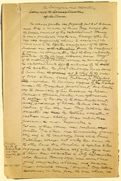  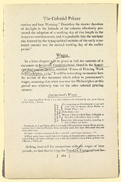  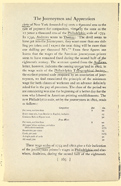 |
|
| |
 |
|
|
CENSORSHIP
20) Thomas Maule. Truth held forth and maintained. New York: William Bradford, 1695.
[T]his was the beginning of a censorship in Massachusetts that was more severe and more continuously irksome than the casual and sporadic efforts of the other colonies to keep the press within bounds. It resulted, among other things, in the suppression, in 1690, of Publick Occurrences, the first American newspaper; in the altering in 1669 of an edition of the Imitation of Christ; in the prohibition about 1668 of a rowdy but amusing piece, The Isle of Pines. It brought about in 1695 the suppression and burning of Thomas Maule's Truth held forth; in 1723, the persecution of John Checkley; the departure from Boston of James Franklin in 1727 and of Daniel Fowle in 1756, and the consequent establishment of the press in the colonies of Rhode Island and New Hampshire. The Colonial Printer, pp. 175-176 |
|
| |
|
|
|
21) John Peter Zenger. The tryal of John Peter Zenger, of New-York, printer, who was lately try'd and acquitted for printing and publishing a libel against the government. London: Printed for J. Wilford, 1738.
More widely known than any of the causes célèbres which arose in Massachusetts, and wider reaching in its effects, was the trial for libel of John Peter Zenger in New York, in 1735. One of the concluding paragraphs of Livingston Rutherfurd's John Peter Zenger, his Press, his Trial [1904] states concisely the importance of the Zenger trial in the growth of a free press in the colonies, in the words: "The trial of Zenger first established in North America the principle that in prosecution for libel the jury were the judges of both the law and the facts. The liberty of the press was secure from assault and the people became equipped with the most powerful weapon for successfully combating arbitrary power, the right of freely criticizing the conduct of public men, more than fifty years before the celebrated trial of 'Junius' gave the same privilege to the people of England." The Colonial Printer, p. 176 |
|
| |
|
|
|
22) The Constitution of the United States of America, as agreed upon by their delegates in convention, September 17th, 1787: Together with the Articles of Amendment, as Adopted by the Congress of the Said States, in the Year 1789. Bennington: Anthony Haswell, 1798.
The exercise of censorship, indeed, was a feature of the age rather than of the place, and even before the Zenger trial, the cautious printer of the colonies found a relatively light restriction placed upon his activities. The most brutal official interference with the person and rights of a printer on record in this country is the persecution of Anthony Haswell of Vermont that occurred in the year 1799, in a period supposedly more enlightened than that in which the colonial printer lived and worked. The Colonial Printer, pp. 176-177 |
|
| |
 |
|
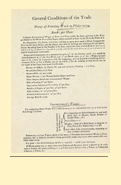 |
CHARGES for PRINTED WORK
23) George Washington, President van de Vereenige Staaten van America. = George Washington, President of the United States of America. [Philadelphia?, 1793].
We begin with the staple of the colonial printing office, the blank form. In the year 1700 the Maryland Assembly passed an ordinance which required that all forms used in the courts and in government business generally be printed on the press controlled by William Bladen and sold at the fixed price of one penny each for the writs and other short forms, and two pence each for longer papers of the letters testamentary class. These prices seem to be somewhat higher than the prices charged by Franklin in the period 1730-1735, but Franklin's charge was a wholesale price fixed by competition rather than by governmental ordinance. More than half a century later we find that the price for similar articles in Pennsylvania had changed very little, even though in the later period the sums are stated in colonial currency. An examination of the Work Book of Franklin & Hall shows that in the years 1759 to 1763 this firm was charging its customers slightly less than a penny each for such pieces as advertisements, lottery tickets, and enlistment forms, in lots of 200 to 500. For blank forms with their more difficult composition the price was nearer a penny-halfpenny each in lots of a similar or larger size. Composition was the expensive feature then as now. The Colonial Printer, p. 178
|
|
| |
|
|
|
24) John Eliot. Mamusse wunneetupanatamwe Up-Biblium God naneeswe Nukkone Testament kah wonk VVusku Testament. Cambridge: Samuel Green and Marmaduke Johnson, 1663.
The prices for book printing at different periods are also ascertainable. In the year 1662, Samuel Green, working part of the time alone and the remainder of the time with the help of Marmaduke Johnson, was paid an average price of 60 shillings a sheet for printing forty-six sheets of the Eliot Indian Bible. Green did not own the press or letters he used in the work, nor did he supply ink or paper, so that to all intents this sum was wages for the labor of himself and his assistant. Viewed in this light, 60 shillings sterling seems a high charge for composition and presswork on a single sheet in quarto, but when it is remembered that the page was set in bourgeois or nine point type, in double column, in a language unknown to the compositor, and that the rate of progress with two men at work was but a sheet a week, this payment does not continue to seem extraordinarily high. When the Corporation for Propagating the Gospel, in the preceding decade, was having the Eliot Indian Tracts printed in London, the charge, less paper averaged 40 shillings a sheet in quarto, printed in a larger type, in the English language. The Colonial Printer, p. 179 |
|
| |
|
|
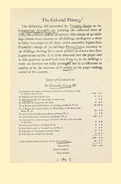 |
25) Connecticut. Acts and laws, made and passed by the general court or assembly of the governor and company of the state of Connecticut, in America. New London: Timothy Green, 1784 .
The following bill presented by Timothy Green to the Connecticut Assembly for printing the collected laws of 1784 has a similar quality of interest. His charge of 40 shillings Connecticut currency or 28 shillings sterling for a sheet in folio, four pages to the sheet, seems somewhat higher than Franklin's charge of 50 shillings Pennsylvania currency or 30 shillings sterling for a sheet printed in octavo less than a generation earlier. It is to be observed that the paper cost in this post-war period had risen from 14 to 20 shillings a ream, an increase not fully accounted for by a difference in quality or by the nearness of Franklin to the paper-making center of the country. The Colonial Printer, p. 184 |
|
| |
|
|
|
26) Alexander Arscott. Some considerations relating to the present state of the Christian religion. Philadelphia: B. Franklin, 1732.
In the period 1730-1735, Franklin was being paid 26 shillings a sheet by the Pennsylvania Assembly for the printing of its journals, and 25 shillings a sheet for the laws. These volumes were in folio, but his charge for printing Arscot's Some Considerations Relating to the Present State of the Christian Religion, in small octavo, was also 26 shillings a sheet. It is difficult to understand why the Arscot book with its greater amount of composition and greater difficulty of imposition should not have been charged at a higher rate than that which seemed reasonable for the folio laws and proceedings. Other books of this period were charged uniformly in the Franklin accounts at 25 or 26 shillings a sheet, apparently without regard to format. The Colonial Printer, p. 180 |
|
| |
 |
|
| |
BOOKBINDING in Colonial AMERICA
At the time of the invention of printing, the binding of books had already passed from the hands of the goldsmith and the enamel worker into the care of a craftsman who made it his principal occupation, and carried it on usually in a separate establishment. At all times since, local conditions have frequently brought about a temporary merging of the printer's and the bookbinder's functions, but the normal practice in large and industrially well-advanced communities has been that the printer should turn over his sheets to a binder outside his own establishment, or to a publisher, who in turn would employ a craftsman of this character. But in the smaller towns of colonial America, where organization was late in reaching this degree of perfection, we find prevailing in the printing shops that duality in function which has been spoken of as a frequent necessity imposed by local conditions. In those places the printer was printer and publisher too, and because there was not enough business available in his community to justify the presence of a local bindery, he undertook on his own account to put into boards and leather such productions of his press as he considered worthy of a dignity greater than the familiar blue or marbled paper in which were issued his pamphlets and unimportant books. The Colonial Printer, p. 191 |
|
 |
27) [Biblia Latina.] [Mainz: Johann Gutenberg, 1455-1456?].
Though conditions inevitably improved as time went on, there must often have been periods of stringency in a country not essentially industrial in character. It is interesting to see one of the practices of an earlier day repeating itself, to see the American printer-binder, temporarily out of binder's board, forced to the adoption of economies not unfamiliar in the European shops of the fifteenth century. Here again we find shop waste being utilized as lining and backing, and even as board itself when pasted and pressed together in numerous successive laminations. The tale of important fragments rescued from bindings of fifteenth-century books is endless. Most of the so-called Costeriana have been found in the bindings of early books; many sheets of the Gutenburg Bible and many important broadsides and engravings have been rescued from their useful and inglorious servitude by sharp-eyed salvagers of bibliophilic gems. The Colonial Printer, pp. 198-199 |
|
| |
|
|
|
28) The charter of the city of New-York. New York: John Peter Zenger, 1735.
The normal issue of the American shop, the book of session laws or assembly proceedings, the pamphlet, and the sermon, did not attain the dignity that used to impress Dr. Johnson. This was not, in the Doctor's phrase, "a bound book," and therefore intrinsically worthy of respect. It was sent into the world folded and sewn, with a paper cover "drawn on," that is, pasted to the end papers at front and back. This cover was ordinarily either plain blue or marbled paper. Sometimes a more interesting stock was employed for the purpose. The John Carter Brown copy of the Charter of the City of New York, printed by Zenger in 1735, has a drawn-on cover of later date of greenish paper stamped in gold with a decoration of animals of many species and sizes. This "Dutch gilt" paper, as it was called, forms an interesting cover, and in its original condition, when the gold was brilliant, it must have shown a brave and pleasant face to a world accustomed to the monotony of blue or marbled papers. The Colonial Printer, p. 202 |
|
| |
|
|
|
29) J. F. Martinet. The catechism of nature. Philadelphia: John Bioren, 1799.
A Dutch gilt paper stamped with scenes of religious significance—Christ emerging from the tomb, and St. John with pen and book and eagle—forms the cover of a Catechism of Nature for the Use of Children, Philadelphia, 1799. Indeed, Isaiah Thomas and other printers of the time made frequent use of these stamped paper covers on books for children. Their use on other books was sufficiently general to show us that the colonial book buyer occasionally had his eyes gratified by a successful attempt at decoration, even in the case of cheaper volumes of which the covers were intended purely for protective purposes. The Colonial Printer, pp. 202-203 |
|
| |
|
|
|
30) Thieleman J. van Braght. Der blutige Schau-Platz oder Martyrer-Spiegel. Ephrata: Verlags der Brüderschafft, 1748-1749.
It would be an error in discrimination to neglect mention of the binding accomplished by the German "solitaries" at the Ephrata Cloister in Bethlehem, Pennsylvania. This community conducted in the middle years of the eighteenth century one of the most interesting of all colonial American printing establishments, for its members printed books on paper made in their own mill and bound them afterwards in their own bindery. Here was printed and bound Der Blutige Schau-Platz, the largest and ugliest book produced in colonial America, and here, it has been suggested, was bound the Sower German Bible of 1743 (Item 14)… They are without lettering and decorated only with blind-tooled designs, but solid, dependable, and well fashioned in the manner one would expect from craftsmen of the German tradition, unlike any other bindings made in the three Americas. The Colonial Printer, pp. 210-211 |
|
| |
|
|
|
31) The vvhole booke of Psalmes faithfully translated into English metre. Cambridge: Stephen Day, 1640.
It is not necessary to produce evidence of the unity of bindery and printing office in the smaller communities of colonial America, for the customary advertisements of the printers have left us in no doubt as to the existence of this condition. A more interesting question is the extent to which the bindery existed as an establishment independent of the printing house, or as an appendage to the business of a local bookseller. It is not possible to say that the John Sanders, bookbinder, who took the Freeman's Oath in Boston in 1636 and purchased a shop of some sort in 1637, afterwards exercised his craft on the Bay Psalm Book or on other productions of the Daye press, but certainly the cleavage began to show itself very early in the history of the trades. The Colonial Printer, p. 192 |
|
| |
|
|
|
32) The charter, and statutes, of the College of William and Mary, in Virginia. Williamsburg: William Parks, 1736.
About the year 1728, though, William Parks, then of Annapolis, began to advertise himself as one "Who binds old Books very well, and cheap."… [T]he John Carter Brown copy of The Charter of William and Mary College, published in 1736, the binder has combined other tools with those of the Muscipula bindings, and, in a more elaborate design, imposed them upon an excellent blue morocco. The somewhat meaningless angular tooling of the back between the raised bands does not detract seriously from a tasteful and well-executed binding. In the work of this printing-shop bindery one finds, so far as my knowledge carries me, almost the earliest examples of conscious artistic excellence to be met among the books printed and, without question, bound in colonial America. The Colonial Printer, pp. 208-209 |
|
| |
|
|
 |
33) The Holy Bible, containing the Old and New Testaments. Philadelphia: R. Aitken, 1782.
At the very close of the colonial period it is possible to find some exceptionally nice examples of the binder's art. The covers of the John Carter Brown copy of the Aitken Bible, printed in Philadelphia in 1781-1782, are of this description. The book has been arbitrarily divided into two volumes of almost equal size, and each volume put into a cover of olive morocco embellished with delicately executed tooling in gold. Immediately the volumes are seen and handled, one perceives that they came from the hands of a workman who added the grace of an artistic nature to a sure and learned craftsmanship. It is easy to venture a guess at the identity of the binder who designed these harmonious combinations of flowers and leaves in gold tooling, freely and unconventionally conceived…When one learns that the printer of the book, Robert Aitken, was bred a bookbinder in Edinburgh, and that he worked in Philadelphia as bookbinder and bookseller before he took up printing, the conclusion forces itself that here was a printer who executed his own binding and that a part of his edition of the Bible was thus beautifully covered and ornamented for special sale by himself or by his competent daughter Jane. The Colonial Printer, pp. 211-212 |
|
| |
|
|
|
34) Richard Burn. An abridgment of Burn's Justice of the Peace and parish officer. Boston: Joseph Greenleaf, 1773.
The John Carter Brown Library has recently secured a fine copy of An Abridgement of Burn's Justice of the Peace and Parish Officer, printed in Boston in 1773, and later bound in Keene, New Hampshire, that busy center for the publication of chapbooks of the 1790's. In plain sheep with a blindtooled border, the volume has been very well bound by Thomas S. Webb, whose printed label is found in position. This binder (and author of Masonic books) worked at Keene from 1790 to 1796; in 1797 he removed to Albany. The specimen of his handicraft before us is so well accomplished in essentials, so honest and without pretense of being something else, so redolent of old simple things and ways, of old law offices and country justices with hardened hands, and heads too perhaps, that I like to think of it as representing the typical American binding of the eighteenth century, a natural product expressing the homely quality of its environment. The Colonial Printer, pp. 212-213 |
|
| |
|
|
|
35) Andrew Barclay. Books bound and sold gilt or plain by Andrew Barclay; next door but one north of the Three Kings, in Cornhill Boston. [Boston, between 1766 and 1767].
Now and then, too seldom though, one opens an American book in its original binding and finds pasted upon its inside front cover a plate that seems at first glance to be the familiar ex libris usually found in that position. But there is more of a thrill to the experience I have in mind, for on this rare occasion a closer look shows the printed or engraved label to be a binder's trade card, and the colonial American binder's card is sufficiently rare to be looked at twice, or even, less elegantly, to be gaped at. Certainly the knowing bookseller looks at it with eyes wide open as he estimates in terms of money the points of the book that contains one of these rarities. The Colonial Printer, p. 212 |
|